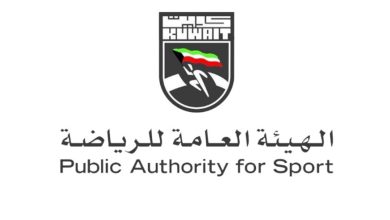What Is Product Development? Definition & Examples
Instead, he developed an automated vehicle for which there was no explicit demand at the time. Launching a new package deal would attract the attention of customers. You can offer them a variety of products, bundles, discounts, or free samples to choose your product. The package deal is such an offer that the customers won’t get it otherwise, and the limited-time offer is a great marketing strategy. Taco Bell has a unique approach to new product development, as its innovation team looks to grocery stores, social media and competitors for its inspiration. Market strategy and business analysisidentifies the product strategy of how to optimally market and sell a product or service.
In other words, product development incorporates a product’s entire journey. Their mission is to make design accessible to more people and help them bring their creativity to life. Let’s dive into the product life cycle and define the six product phases.
Launch: Bring new capabilities to market
Indeed, UX designers are concerned with the entire process of acquiring and integrating a product . However, product designers extend this scope to carefully monitor their brands’ positions in the market over time. They can therefore prevent or minimize risky consequences of implementing designs, and help maximize and sustain gains. The product development process typically consists of several activities that firms employ in the complex process of delivering new products to the market.
However, this also occasionally happens in the engineering department. Sometimes, engineers stumble upon great technological solutions – whether there is a need in the market for that solution then remains to be seen. As a result, idea generation on the engineering side can, while of course sometimes resulting in great successes, also waste a significant amount of resources. This implies that idea generation in the marketing department tends to be more efficient and allows to focus scarce resources on those ideas for which there is actual demand in the marketplace. Prototypers are the product team members who bring the team’s ideas to a tangible state to help the company quickly validate with users the product’s features and other characteristics.
In this stage, the team’s focus shifts from planning to building. This is when you bring product and engineering together to deeply review features and requirements. The engineering team then owns the development work — including estimation, sprint planning, and acceptance criteria. Many development teams choose an agile product development methodology to organize and prioritize work items across sprints. You set product strategy, build the roadmap, and define product features.
What are product development best practices?
In many cases, marketers involve actual customers in product testing. Consumers can evaluate prototypes and work with pre-release products. Their experiences may be very useful in the product development stage. At the end of the concept testing stage, you should have a clear idea of which product concept is the best in terms of customer feedback.
Ask for verbal commitments to the duties defined and honor the critical role each group plays in product success. Before we look at how to create a product, let’s consider some of the prerequisites to product development. You can save a lot of time and effort by making sure you’ve considered the following things before embarking on the product creation process. The purchase decision involves many factors to consider, but the main thing you should keep in mind is production cost and the strategic value of technology. You should ask yourself a question; how the technology you’re developing or buying important for the success of your company.
To validate a product concept, consider documenting ideas in the form of a business case. This will allow all team members to have a clear understanding of the initial product features and the objectives of the new product launch. The product development process has evolved in recent years and is now commonly used by dividing each step into six separate phases. This helps better organize the process and break individual deliverables into smaller tasks.
In smaller companies such as start-ups, UX designers tend to handle all the design work. Lean Product Design only works in organizations that embrace continuous learning and accept that they already know everything. Moving forward with unknowns and unanswered questions doesn’t always sit well in larger enterprise settings. In these settings, they build, measure, and learn in the face of well-plotted master plans. Before the mass-production era of manufacturing, craftspeople built products primarily by hand. This meant there were fewer products available for sale and that they cost more.
When a product is planned, it results in the effective and appropriate utilization of available resources and inputs which go into the production process. Download our free ebook The Basics of User Experience Designto learn about core concepts of UX design. Lastly, UX unicorns are rare people who handle both UX design and frontend development. Now that we’ve gone through the 6 main UX roles, you should have a much clearer idea of the one that appeals the most to you.
From the idea that sprouts in your head to the product you see on a store’s shelf, there is an entire process that brings it all together. Today, we will explore what goes into the Product development process, who is involved and why this matters. The company should always be ready to face losses or strategize a market exit plan in advance to not be badly http://www.apt-cacher.org/textearticle.id10page5.htm hit if a product doesn’t perform well in the market. Development teams are required to create what is handed over to them and demonstrate to supervisors until the next step is planned and addressed. Product owners finalize what product needs to be developed and created. This step deals with the finalization of the technical aspect of your product.
Standard Stages of Progress in Product Development
The ideation process involves both identifying the problem and finding the solution. New product development is described as transforming an idea into a product available. This article has highlighted the critical areas that a company should work on to develop meaningful and productive products. There isn’t a shortage of demand in the market for the right products, but the responsibility of developing irresistible products ultimately falls on the developer. This is the last step of Stage-Gate Phase of product development, and in this, you will review many critical things related to your product. You need to consider different aspects of your product where there are some possibilities for improvements as per the responses of the consumers.
The product can be tangible or intangible , though sometimes services and other processes are distinguished from “products”. NPD requires an understanding of customer needs and wants, the competitive environment, and the nature of the market.Cost, time, and quality are the main variables that drive customer needs. There are many uncertainties and challenges which companies must face throughout the process. Agile product development is an alternative version of regular product development, which includes all of the same steps but with the addition of agile software development principles added in. These principles include factors such as rapid iteration based on user feedback. Once these ideas have been defined, it’s time to begin building your minimum viable product with initial prototyping.
PRODUCT
But without clear organization, it can be hard to mesh creativity and strategy effectively. Which is where the product development process comes in—a six step framework to help you standardize and define your work. A product roadmap will help you with smooth working on building out your product teams, pricing changes, and infrastructure, as you add more features and overall sales and marketing approaches.
- It’s important to remember that there are MANY different ways to do the costing.
- Market research is conducted to make sure that the product is relevant in the context of the company.
- As a visual designer, you focus on creating pixel-perfect prototypes that are consistent with the rest of the product.
- We’ll use the design thinking process from here onwards to illustrate our points, but we could have used any iterative design process to make our points.
- Having a skilled product manager and the right resources are only the ingredients that help you make your product a great market dish.
- Good product design practices thread themselves throughout the entire product lifecycle.
Chunking out larger solutions into smaller, discrete products or features may calm some of that trepidation. It gives stakeholders a chance to see progress and watch how the continuous feedback loop and rapid iterations result in solutions that truly meet the market needs in short order. Sackett also points out that the design process doesn’t necessarily move in a linear path, although arranged linearly. Sometimes the results learned in a given step lead the team back to repeat or refine an earlier step. These designers focus on user research and other data to identify ways to improve a product’s layout, feature set, and visual aesthetic.
A description of the target market, the planned value proposition, and the sales, market share and profit goals for the first few years. Thankfully, you now possess a map to navigate the sea of UX roles! When you know how UX roles exist to fill gaps in the design process, you’ll emerge clear-headed no matter how chaotic the field seems.
Shopping products are purchased less frequently than convenience products and have a higher price. Buyers compare attributes such as quality, style, and price before making a purchasing decision. The most typical value exchange is money — meaning, products have a price and can be bought and sold. In some cases products will be offered in exchange for feedback, exposure, a trade, or other forms of value.
on important marketing news, strategy guides & best practices!
For a great product, companies need a proper system of product planning that helps in keeping everything systematized. Getting the product launch right is a key requirement for the success of your product or service. Therefore, have a look at our guide to preparing the perfect product launch strategy.
They pull together the cross-functional team, communicate the big-picture goals and plans for the product , and oversee the team’s progress. Showcasing the roadmap is more than unveiling new features and a timeline. Product teams can use this phase as an opportunity to answer questions about product direction and solicit feedback.
Some solutions may be obvious, while others may be less intuitive. Here’s where the team puts in the effort and applies their creativity to devising how a product might serve its needs. Originally started in 2012, Figma was the first professional-grade UI design tool built entirely in the browser. Today, Figma has grown into the leading competitor for design web applications.
If your product team follows a specific product development methodology, such as scrum, you may have built-in checkpoints for evaluating the effectiveness of the team’s output. Those do not supplant the need for dedicated optimization efforts to the overall product development process. Whether you are just getting started or refining an existing workflow, optimizing your product development process is a vital part of continual improvement.
Create a mockup or paper prototype (if you’re designing a physical product) that you can use to test out design changes and show investors what you’re creating. When you have found a viable solution to the problem, it is time to build a market strategy. In this step, you will need to check the practicability of your product idea. In addition to the practical aspects of your product, you will also be required to analyze the legal issue of your product. Platform products establish a basic architecture for a next generation product or process and are substantially larger in scope and resources than incremental projects.
Large companies, for instance, tend to hire specialist designers, so they often have specific roles such as “User Researcher” and “Visual Designer”. Small and medium-sized companies, on the other hand, tend to prefer generalists and will have roles such as “UX Designer” or even “UI/UX Designer”. Always carefully read the job description of an opening before you apply, and make sure it’s a role that you are able and willing to perform. Visual designers are specialists who focus on the prototype phase of the design process.



